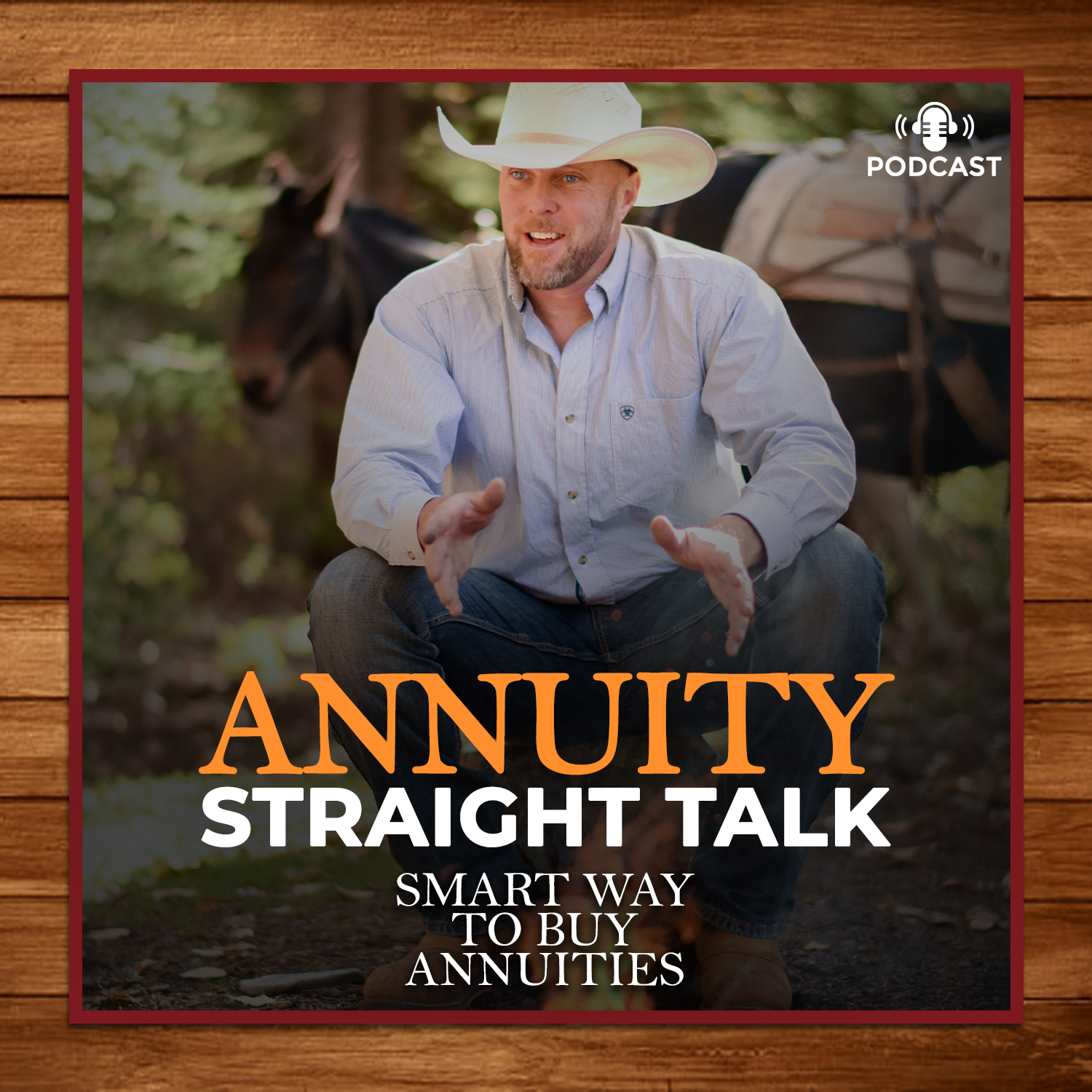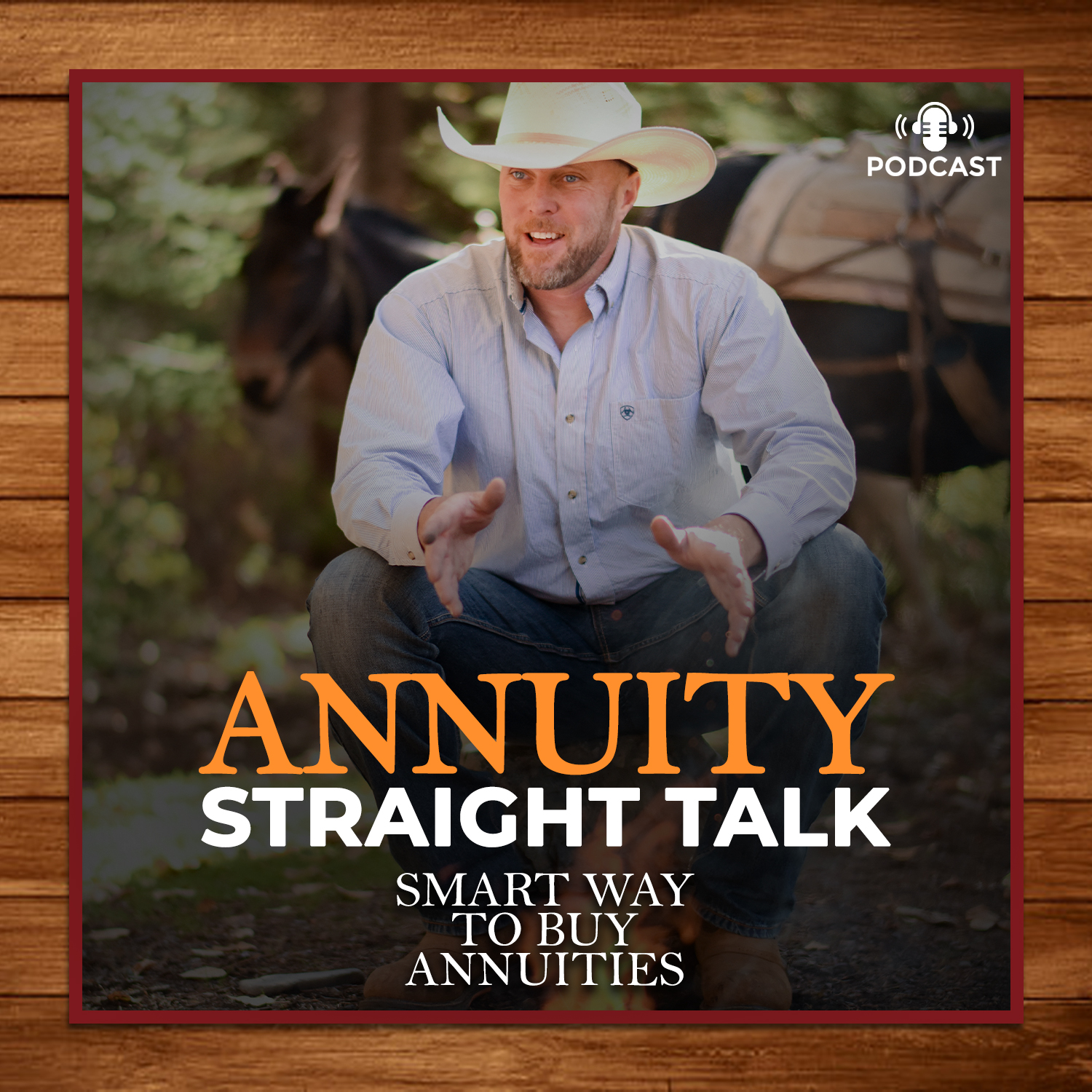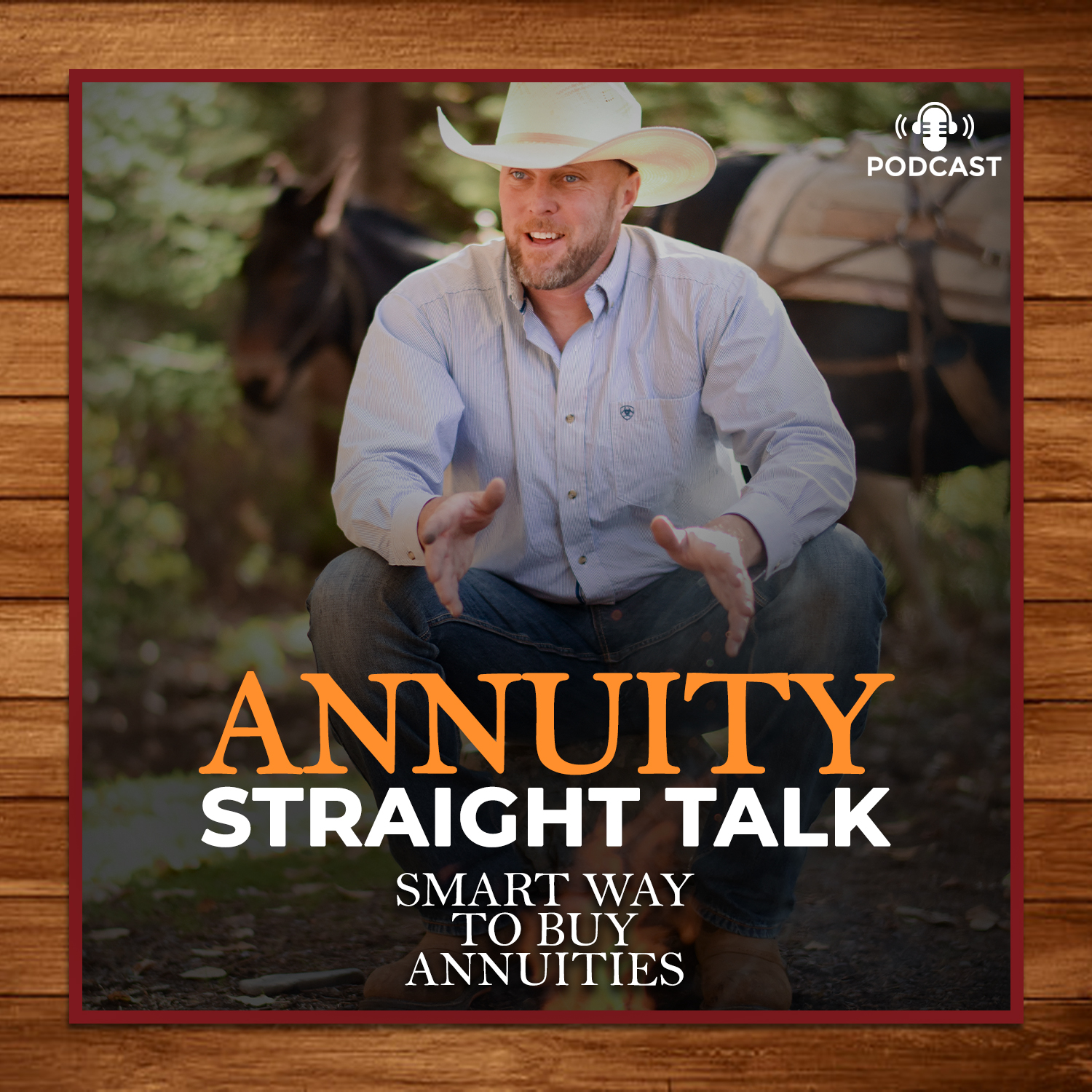Episode Transcript
[00:00:00] Hello and welcome, everybody, to the Annuity Straight Talk podcast, episode number 201.
[00:00:07] My name is Brian Anderson, founder and creator of AnnuityStraightTalk.com.
[00:00:12] please, like, subscribe or comment on any of your favorite podcast platforms or on YouTube.
[00:00:17] Schedule a call with me. At the top right corner of any page on annuitystraighttalk.com hit the button that says schedule a call.
[00:00:24] We got Nate on the calendar, too, helping with some overflow stuff because a lot of people want those prime times, like 8am, 9am he'll get you set up. Good dude knows his business.
[00:00:33] I'm going to talk today about something that is a topic that a lot of people will need to or look to address. Most everybody has to deal with it, but it's certainly the type of thing, you know, for people who might say, oh, I don't really need an annuity or want one, and I'm going to show you how it can help. So can annuities help with required minimum distributions?
[00:00:54] Yeah. Right now, if you're born before 1960, you got to take them at 73. I think I get into that. Well, let's see. I wrote this a few days ago, but past few weeks, got a call from someone I consider to be a mentor in the financial business. I've talked about him several times before. By any definition, he's been incredibly successful. He was a swaps trader on Wall Street. If anybody has a hard time following my analysis, don't even try to understand his career in financial markets, because what he did is as technical as things get. So he is a part of a select class of people because he has an IRA that is of no real use to him, but he's six years away from having to take required minimum distributions. And he said, hey, wait a second, I'm gonna have to do that.
[00:01:34] Would an annuity give me an advantage, or would it make that easier? Now he's asking about the simplicity of it because the IRA just kind of floats. And he's thinking like, hey, if I could automate it somehow. So his is a different deal, and I'm really thinking about doing it. He knows a lot about what I do because we've talked about it a ton. He analyzes my ideas. If I come up with a funky idea in markets or interest rates or something, I'd say, hey, take a look at this. Tell me what you think. You can refine it and tell me if it meets technical scrutiny. Right. It's given me a lot of confidence. If he agrees, it's a good Idea. He's a really frigging smart guy.
[00:02:06] I'm like, wow, this is cool. This is what got me thinking about this episode. Because a lot of people ask about it. I mean, I talked to someone earlier this week, a woman, nice gal with a nice portfolio. Had no clue that she's got to take RMDs. So, all right, you gotta back way up and start there, right? And then somebody's throwing annuities at her. I'm like, okay, how's it gonna help you? Right?
[00:02:25] So my buddy, he's in New York. No sales job's gonna work on him because he's too smart for it. That's not unlike a lot of you. I never try to pull one over on you again. Today a guy called in just out of the blue, called. Somebody's trying to sell him an annuity. I'm like, why? Why do you want it? They haven't told him anything. But the annuity is going to buy. So he's going to try to figure out all annuities and figure out if it's relevant. Come on, man. I was like, well, you got to know this, this, and this first, and then you can talk about that. There's like bonus annuities and he's never seen an annuity before. Holy crap. That's why people don't like them. But this isn't a case study about my friend or anybody else. It's a general deal.
[00:03:00] So I see a fair bit of bad advice in relation to required minimum distributions. A lot of it. Investment managers frequently make recommendations with their assets under management as a primary concern. They want that number. I've seen lots of people being advised to leave IRA assets alone and liquidate other assets first.
[00:03:17] The IRA balloons, and when required distributions come, they're much larger than necessary and push the client into a higher tax bracket than they would have seen otherwise. Happens a lot with Roth conversions. When consumers are advised to use cash to pay taxes and let the IRAs grow, it costs more money than it should, but the manager got to see his compensation grow.
[00:03:36] It's very clear and objective to see when a guy calls himself a fiduciary but is advising based on his compensation.
[00:03:42] In most cases I see you're better off starting a systematic distribution plan as soon as you retire. That's keep the taxes low as possible. If you don't need the money, then reinvest it elsewhere in something that has favorable taxation like capital appreciation stepped up basis when you pass it on. Capital gains tax. If you liquidate it, any advisor or planner should make this a top priority, but I rarely meet people who have been advised to do it. The truth is that most people don't have to worry about RMDs because they can be dealt with naturally within a good distribution plan for retirement income needs. You retire at 62 and don't touch your IRA. But you spend other assets, you're going to have a problem, which means taking far more money than you need for income.
[00:04:22] Most people can handle it with just a good distribution plan, and others don't need the RMD for income and might not think an annuity is necessary. In either case, go back to what I said two weeks ago. An annuity will likely make you more money.
[00:04:33] Go over the rules. If you aren't taking RMDs already, then you'll probably have to start at age 73. If you're born after 1960, then you get to wait until 75. That will probably also change as we go along. In the first year of RMDs, you need to take a little less than 4% of your total IRA balance. There's a table that the IRS publishes. It's a table of factors. At 73, it's 26.2. Divide your IRA assets by 26.2 results in the number of the amount you're required to take out. If you don't take it, then the penalty is 25% of what you should have taken. If you're supposed to take out 10,000 bucks and you don't, then you have $2,500 penalty. Now, people in a really high tax bracket might want to consider that. Kidding. I'm kidding. It's not going to make things better. Every custodian that holds one of your IRAs will send you a fair market value letter at the end of each year. 1231. That's the balance you need to use to calculate the required amount. It's easy because they'll state the amount on the form, but you're not responsible for figuring out what it is. You don't got to do any math unless you pull the withdrawal for one IRA with another ira, which is allowed so long as you take the combined total of all required withdrawals from every individual account you have. So if you got four IRAs and a total of 10,000, you can take it from 1, 2, 3, or 4.
[00:05:45] The 10,000. It's important to realize the excess withdrawals from one IRA can eliminate the need to draw distribution from a different ira. So we're talking about something that is a problem for all retirement distributions required or not, sequence of returns will negatively affect growth of a portfolio. And RMD forces you to take money no matter what the market is doing. You could be forced to sell at a loss. Some level of protection is necessary for optimal growth over time. There are two specific ways that annuities can help with RMDs. And don't forget, either one will just mean you make more money over time. It all depends on whether you need the guaranteed income or not. This is just another way of looking at proper asset allocation that gives you an advantage in retirement. One way to do it is with certain types of income annuities. And the other is to use a fixed annuity, a myga, or a fixed index annuity to protect a portion of your IRA assets. Just about everyone fits into one of those categories. The only one who doesn't is someone who doesn't need the income and doesn't mind 100% risk in the market. Both annuity strategies will produce more portfolio growth than the guy who avoids the annuity and keeps it all at risk. So we're gonna look at each one of these two ways individually. I just use 4% as the first distribution. That's about what it is. It's a little less. But you have to consider that annuity income riders have payouts that start at 8% or better. That means the annuity income will cover the required distribution for twice as many assets. And if the annuity is deferred before income starts, payouts could be even higher, some starting at 15%, depending on how long you let it go. That means you leave market assets alone and they continue to grow. You can run any scenario over the past you want. When market assets are left in one spot and not touched, they will grow the most. And if they grow the most, that means you make more money over time. Now it has to be an annuity with a cash value component to generate the fair market value letter.
[00:07:27] A single premium immediate annuity won't work because there's no cash value.
[00:07:31] The income payment does not offset requirements for other accounts. Now, once the cash value drops to zero, then this benefit will go away, but you'll be well into your 80s by that time and your assets will have grown substantially. And then the problem being is like you have huge RMDs. You got to make right income. Annuities can take care of RMDs for a larger portion of assets than is in the income annuity. Now, if you don't need the income, then an annuity focused on accumulation is the preferred asset for a retirement portfolio. I'm going to tell you why. Using the fixed annuity, the MYGA or the fixed indexed annuity for the safe asset in your portfolio. Portfolio gives you a stable base of cash to draw a distribution when the market is down in value. You will avoid selling stocks at a loss when the timing is not in your favor. It has to be a contract that's got a 10% free withdrawal so you can pull enough to offset required distributions from other accounts. It will lead to more growth over time. Yes, you'll have more money. CDs and bonds won't do the same thing. You don't have the same liquidity without risk. The closest alternative I've seen to this was just certainly an option for those that really just hate annuities. Okay. It's always an out. You always got an out. Investment managers recommend keep a few years worth of distributions in a money market account. So I've seen two, three years worth of distributions that'll let us ride out the storm and make the distribution then you're not really making money on that right now. You can still get around 4%. It's not bad if you want the lower yielding cash.
[00:08:51] But remember they're offering that just because they want to keep more assets under management. Okay. They get to charge you on the stuff in the market. They don't make money on the money market. So as little as possible. Keep it all here. We're going to take our 1% and it's fine if that works for you. Just understand there's a different way. Okay? Now either of these strategies will work for my friend, but I have an easy out. He lives in New York so there aren't as many annuity options available to him. Anyone else who doesn't live in a restrictive state, the case can be made that an annuity works whether you need one or not. For many, this certainly fits into the category of something you should want. Makes sense. You make more money, creates a bigger portfolio, gives you more money to deal with inflation or provides a larger legacy. Choose what's most important to you because there's absolutely nothing wrong with a little bit more money. Solves all your problems, I think. Tell me what you think. Would appreciate your guys feedback on this. Again, I'm not trying to be right about everything. I'm just thinking my way through it. If you got a refinement, let me know. Be happy to have it. Share it with your friends. Anybody who might have a different perspective. Those are good. Makes us better, makes us smarter. This has been episode 201. Please like subscribe or comment on. Any of your favorite podcast platforms are on YouTube. Top right corner of annuitystraighttalk.com if you want to make an appointment says schedule a call. Is there a better way to say it? Appreciate you guys joining me. We're going to be back next week with 202.
[00:10:05] Got some good ideas from other people and a couple of case studies. So we'll get after it. We'll tear it up. We're here to make the best decisions in retirement. I'm your guy. Put a lot of work into it. Proof is right here. Enjoy your day guys. Thanks so much. Talk to you soon. Bye.


